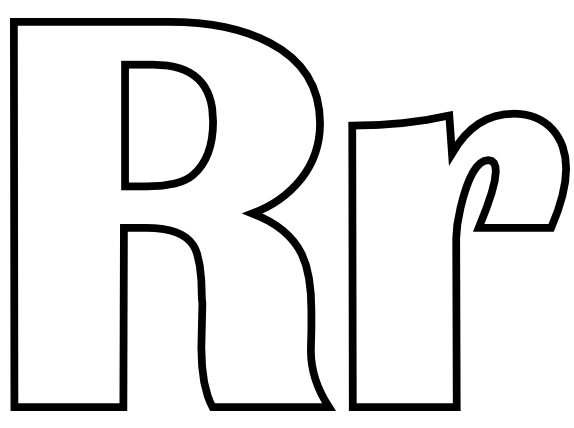 |
| Letter Y Coloring Page. |
What is Weathering?
Weathering causes the disintegration of rock near the surface of the earth. Plant and animal life, atmosphere and water are the major causes of weathering. Weathering breaks down and loosens the surface minerals of rock so they can be transported away by agents of erosion such as water, wind and ice. There are two types of weathering: mechanical and chemical.
 |
| A natural arch produced by erosion of differentially weathered rock in Jebel Kharaz (Jordan). |
Mechanical Weathering
Mechanical weathering is the disintegration of rock into smaller and smaller fragments. Frost action is an effective form of mechanical weathering. When water trickles down into fractures and pores of rock, then freezes, its volume increases by almost 10 percent. This causes outward pressure of about 30,000 pounds per square inch at -7.6 Fahrenheit. Frost action causes rocks to be broken apart into angular fragments. Idaho's extreme temperature range in the high country causes frost action to be a very important form of weathering.
Exfoliation is a form of mechanical weathering in which curved plates of rock are stripped from rock below. This results in exfoliation domes or dome-like hills and rounded boulders. Exfoliation domes occur along planes of parting called joints, which are curved more or less parallel to the surface. These joints are several inches apart near the surface but increase in distance to several feet apart with depth. One after another these layers are spalled off resulting in rounded or dome-shaped rock forms. Most people believe exfoliation is caused by instability as a result of drastically reduced pressure at the earth's surface allowing the rock to expand.
Exfoliation domes are best developed in granitic rock. Yosemite National Park has exceptional examples of exfoliation domes. Idaho has good examples in the Quiet City of Rocks near Oakley as well as in many parts of the granitic Idaho Batholith. In fact, these characteristic rounded forms make rock exposure of the granitic Idaho Batholith easy to identify.
Another type of exfoliation occurs where boulders are spheroidally weathered. These boulders are rounded by concentric shells of rock spalling off, similar to the way shells may be removed from an onion. The outer shells are formed by chemical weathering of certain minerals to a product with a greater volume than the original material. For example, feldspar in granite is converted to clay which occupies a larger volume. Igneous rocks are very susceptible to mechanical weathering.
Chemical Weathering
Chemical weathering transforms the original material into a substance with a different composition and different physical characteristics. The new substance is typically much softer and more susceptible to agents of erosion than the original material. The rate of chemical weathering is greatly accelerated by the presence of warm temperatures and moisture. Also, some minerals are more vulnerable to chemical weathering than others. For example, feldspar is far more reactive than quartz.
Differential weathering occurs when some parts of a rock weather at different rates than others. Excellent examples of differential weathering occur in the Idavada silicic volcanic rocks in the Snake River Plains. Balanced Rock and the Gooding City of Rocks are outstanding examples of differential weathering.
Source: Idaho Museum of Natural History.
Source: Idaho Museum of Natural History.
What is spheroidal weathering?
Spheroidal weathering is a type of chemical weathering that creates rounded boulders and helps to create domed monoliths. This should not be confused with stream abrasion, a physical process which also creates rounded rocks on a much smaller scale. A good example of spheroidal weathering can be found in the Alabama Hills area of eastern California.
 |
| Spheroidal weathering in a Deccan lava flow. Location: Katraj Ghat, Pune District. |
Spheroidal weathering occurs whenever a mass of rock (most typically granitic in composition), experiences a drastic reduction in ambient heat and pressure, such as when a batholith is exposed at the surface.
Rock forms at great temperatures and pressures (760 °C and 300 MPa, for granitic rock), and in granites there are three mutually perpendicular sets of joints that develop when this overburden is removed.
Two things cause this in granites: the quartz crystals expand about 5%, and acidic water attacks the feldspar minerals, turning them into clay.
Thus the corners become rounded, because angular edges provide more than one area of attack by exposing a greater amount of surface area. Edges and especially corners of an angular block weather faster than flatter surfaces.
The ultimate result of this process is a rounded boulder or a dome monolith such as the rounded back of Half Dome in Yosemite National Park.
Rock forms at great temperatures and pressures (760 °C and 300 MPa, for granitic rock), and in granites there are three mutually perpendicular sets of joints that develop when this overburden is removed.
Two things cause this in granites: the quartz crystals expand about 5%, and acidic water attacks the feldspar minerals, turning them into clay.
Thus the corners become rounded, because angular edges provide more than one area of attack by exposing a greater amount of surface area. Edges and especially corners of an angular block weather faster than flatter surfaces.
The ultimate result of this process is a rounded boulder or a dome monolith such as the rounded back of Half Dome in Yosemite National Park.
The process of spheroidal weathering is slower than other common types of weathering such as frost wedging, and it becomes lower still at progressively lower temperatures which slow down the chemical process of feldspar breakdown. Thus many granitic mountain peaks are jagged and craggey instead of rounded.
References • Geology Underfoot in Death Valley and Owens Valley, Sharp, Glazner (Mountain Press Publishing Company, Missoula; 1997) ISBN 0-87842-362-1.
Subscribe to:
Posts (Atom)



























